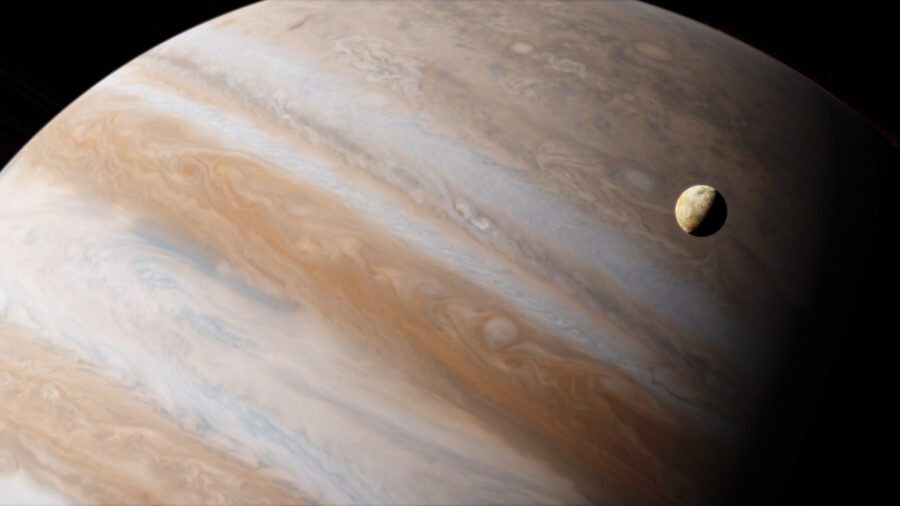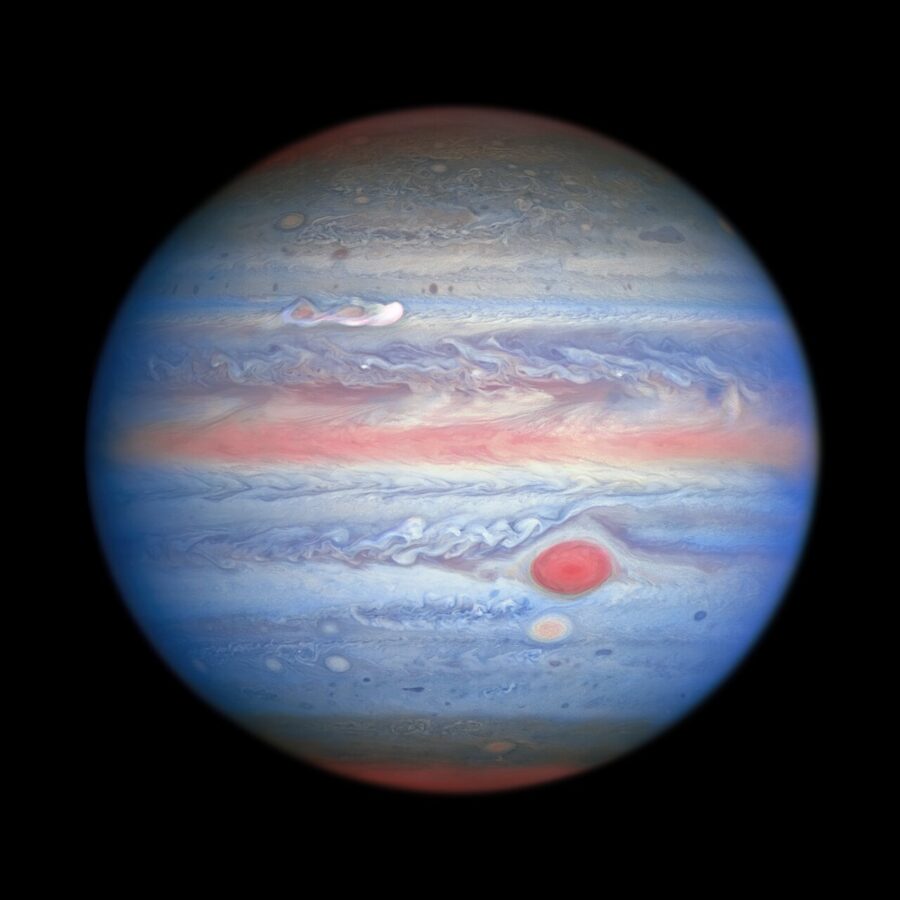Webb Telescope Spots Discovery In Jupiter’s Atmosphere

As if NASA’s James Webb Space Telescope (JWST) weren’t groundbreaking enough, it just made a groundbreaking discovery in the heart of Jupiter’s atmosphere. According to The University of California, Berkeley, the powerful piece of technology unveiled a rapid jet stream on the gas giant, racing at an incredible 320 miles per hour.
The jet stream’s staggering speed far exceeds what has been previously observed.
The high-speed jet stream speeds about 15-30 miles above the planet’s primary cloud deck and is over 3,000 miles wide. Interestingly, it neatly overlays the gas giant’s equator. NASA’s Hubble Space Telescope previously evidenced that the winds soaring through the planet’s observable cloud layer speed at about 180 miles per hour. This means there is a steep increase in wind speed above and beyond the barrier of Jupiter’s visible clouds.
We have scientist Ricardo Hueso to thank for this compelling information. Hueso led a team of researchers who recently published a journal in Nature Astronomy. The scientist, a faculty member at the University of the Basque Country in Bilbao, Spain, conveyed that the discovery reveals what the “blurred hazes” recognized in the gas planet’s atmosphere actually are; the jet stream’s staggering speed far exceeds what has been previously observed.
Exemplifying the incredible capabilities of the Webb telescope, the excitingly discovered jet stream provides significant insights into the fascinating layers of Jupiter’s notoriously unruly atmosphere.
The James Webb Space Telescope recently discovered a fast-moving jet stream more than 3,000 miles wide in Jupiter’s atmosphere.
Initially documented in July 2022, the new images—seemingly out of sci-fi—of the gas giant were taken by Webb’s Near-Infrared Camera, part of the Early Release Science program. Imke de Pater, professor emirate at the University of California, Berkely and Thierry Fouchet from the Observatory of Paris, led the trailblazing ERS observation.

An array of terrestrial telescopes, spacecraft such as NASA’s Juno and Cassini, and the Hubble Space Telescope have observed the Jovian system’s volatile, unpredictable weather patterns over the years. But de Pater underscored how Webb uniquely provided fresh insights into Jupiter’s rings, satellite objects, and atmosphere.
Theoretically, the jet stream might have to do with a sophisticated atmospheric tendency observed for years on the gas giant, Saturn, and Earth.
Operating at intervals of single Jovian days (meaning ten hours) and using four separate filters, the NIRCam ascertained unprecedented images of the gas planet. It was through painstakingly gauging the moment of tiny atmospheric features—clouds, primarily, most likely comprised of ammonia ice and photochemical haze particles—that the wind speed was carefully calculated.
Theoretically, the jet stream might have to do with a sophisticated atmospheric tendency observed for years on the gas giant, Saturn, and Earth. The phenomenon? Persistent temperature and wind oscillations in the stratosphere; on Jupiter, said oscillations regularly occur, albeit every four to six years.
Scientists behind the discovery, such as Leigh Fletcher of the University of Leicester in the UK, mentioned that these stratosphere patterns on the gas planet could determine the incredible strength and speed of the jet stream. Fletcher forecasted significant fluctuations over the coming years.
Saturn’s atmosphere also includes these extraordinary jet streams. Both the ringed planet and the gas giant experience speedy rotation, the above-mentioned ten-hour-long spin. Their hasty rotations align Saturn and Jupiter precisely with their respective latitudes, balancing the Coriolis forces and the latitudinal pressure gradients—and, thus, producing jet streams.












